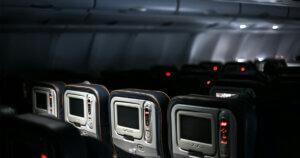
Code Blue
Code Blue in Flight Blog What is a Code Blue in aviation? Code Blue is the term used to refer to time-dependent health incidents, that is, those in which every
EL ESPAÑOL has reached out to the Chief of Operations at World Aviation and instructor at the Cuatro Vientos aerodrome.
A key element of Jesús Calleja’s show “Volando Voy” on Cuatro is his helicopter, a Robinson R44 valued at 350,000 euros with maintenance costs of 1,600 euros every 50 hours.
Many who board the craft can hardly believe that the adventurer himself is the pilot, but indeed he is, after making a significant financial effort to purchase the helicopter. He also had to dedicate himself to studying, acknowledging that obtaining the license was one of his most challenging achievements.
“I think out of all the flight licenses, it’s the one with the highest failure rate due to its difficulty. But once you have it, it’s fantastic,” commented the host of Planeta Calleja.
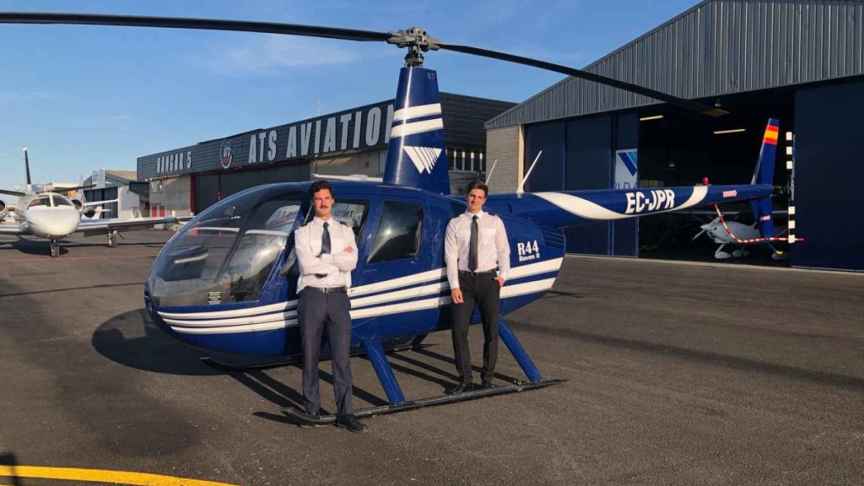
Ricardo Ozores Arriola, a commercial pilot and instructor at Cuatro Vientos aerodrome, has been approached by EL ESPAÑOL to discuss the examination Calleja passed, its challenges, flight hours, as well as to review his professional career and his role as the Chief of Operations at World Aviation.
Jesús Calleja reminded this newspaper that his examination consisted of two parts, theory and practice. He passed the theoretical part easily because “I am lucky to have a photographic memory, and I really could have studied anything because I read a book and never forget it”; the practical part also did not pose a great difficulty for the adventurer given his flight experience.
“The practical I also passed the first time because they are maneuvers that I had done with the instructor and since I had to complete a course that we had rehearsed. There or you do it or you don’t pass. It’s like the driving test, you go with an examiner next to you and you have to do what he tells you,” he recalled.
Ozores Arriola, on the other hand, emphasizes that the average time to get a Private Pilot License (PPL) ranges from six months to a year: “It depends on the time you can dedicate to study and flight lessons. More important than finishing quickly is that you become a safe pilot,” he says.
“Pilot licenses have several levels: the PPL —for private pilots— and the CPL or ATPL —which are professional. The latter allow you to be remunerated for flying. The private one is also called sport and allows you to have your own helicopter and fly it,” explains the man from San Sebastián.
QUESTION: What is the examination like to obtain the Private Pilot License (PPL)?
ANSWER: The examination is a standard flight where you demonstrate your competence as pilot in command of an aircraft. It involves the same requirements whether in a helicopter or airplane, except that the maneuvers performed are different. Broadly speaking, the examiner typically asks the student to prepare navigation passing through visual reference points such as towns, crossroads, and castles that are visible from the helicopter or airplane. During this phase of the exam, it is assessed whether the student can plan a route, calculate times, the fuel needed for the trip, check the areas they will be flying over for any restrictions, prohibitions or dangers, and anticipate the weather conditions at the time of departure and arrival.
During the flight, the examiner may simulate some kind of failure or undesired situation to see the candidate’s reaction capability and evaluate their decision-making. The private pilot course includes a phase specifically dedicated to the emergencies that may be encountered during flight. While not common, as the pilot in command of an aircraft, you must always be prepared for any adversity, which is why training at a flight school is so important.
QUESTION: What does the theoretical preparation involve? And the practical?
ANSWER: The Private Pilot Course consists of around 120 hours of classroom instruction, spread across nine subjects, such as meteorology, human factors, and aircraft knowledge. The practical component requires a minimum of 45 hours of flight. During the course, the candidate must fly at least ten hours completely solo.
Additionally, they must perform cross-country flights, landings in confined areas, and as previously mentioned, emergencies. The repeated practice of a simulated engine failure allows a student to learn and react in a timely and appropriate manner to these types of situations. In a real situation, the speed of reaction can be critical.
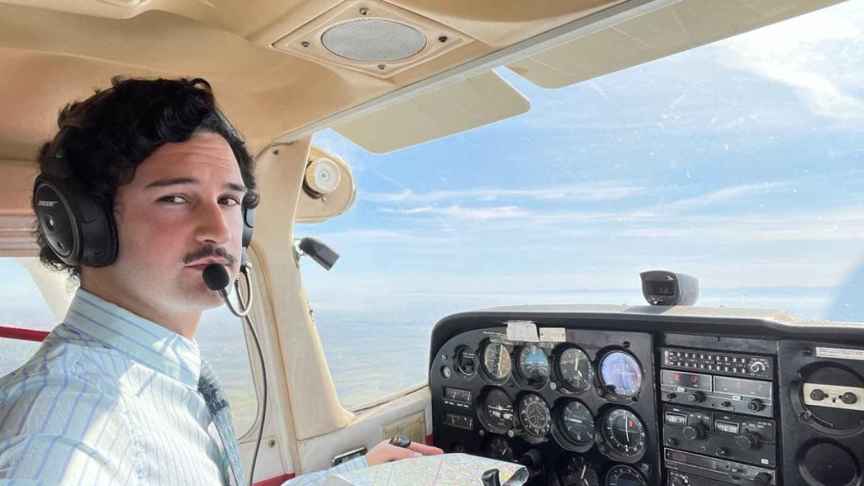
QUESTION: Which is the most challenging subject to teach?
ANSWER: General Navigation, without a doubt. It’s complicated for both the instructor and the student. The concepts taught, such as wind drift, calculating true airspeed or groundspeed, magnetic course, and true course, can be troublesome. But it’s quite manageable if you study.
QUESTION: What are the differences between an airplane license and a helicopter license?
ANSWER: Aside from the differences in flight handling between an airplane and a helicopter, the licenses are quite similar. In fact, having one for airplanes or helicopters, you could do a ‘bridge course’ from one to the other. You would only have to take four theoretical subjects that are specific to either airplanes or helicopters, such as load and balance or general aircraft knowledge, and some of the flight hours.
QUESTION: What percentage of students begin and complete the training? What tends to be the reason for dropout?
ANSWER: Virtually one hundred percent of the students who start successfully complete the course and obtain a license, unless personal reasons require them to postpone it.
Jesús Calleja states that his helicopter is essential in “Volando Voy” and that it required a significant financial effort to acquire: “I bought it by getting a loan to make the program, and we are already amortizing it.”
“It’s a Robinson R44, which is the most cost-effective helicopter in operation. That is, the least expensive because it’s piston-driven, not turbine, and it flies extraordinarily well. Due to its characteristics, it was designed for private flight, not work. That’s why it’s highly optimized to use very little fuel, to have very cheap maintenance, and everything is very economical,” explains the adventurer.
Ozores Arriola also has experience flying the same model helicopter that Calleja uses in his show: “I was fortunate to study at World Aviation, which has a large fleet of airplanes and helicopters, including two R44s. On some positioning flights, the instructor lets us assist with radio communications and teaches us to take the controls and handle them. I’m an airplane pilot, but really flying in an R44 is fascinating,” he says.
And he adds that the use of the helicopter in “Volando Voy” “gives visibility to general aviation and makes the idea that a person can travel by flying more accessible in Spain. In addition, it shows places in Spain that seem to have been forgotten. Our country is much more than Madrid or Barcelona.”
The man from San Sebastián doesn’t remember exactly when he decided to become a pilot, hence “I usually say that I was born wanting to be one and have pursued that dream. I have part of the journey made, but I want to work for Spain’s flagship airline, Iberia.”
“You have to like aviation because being a pilot is a vocation; you have to be prepared psychologically, as many of the trainings we undergo are emergency situations, such as engine failure, and you have to learn to try to get out on your own, because in that situation you already consider the aircraft lost,” says the pilot.
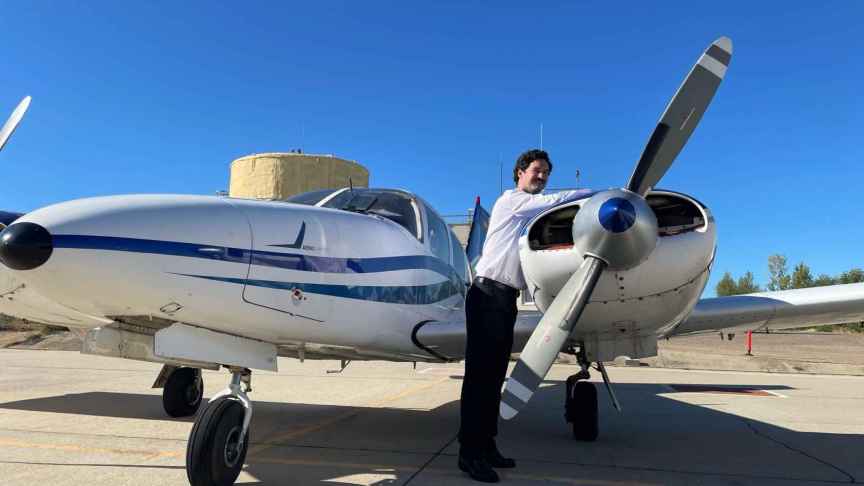
QUESTION: What licenses do you hold?
ANSWER: I have the commercial airplane pilot license, which will allow me to work as a pilot in any European airline.
QUESTION: How was your training, and has it changed compared to the current one, if at all?
ANSWER: I studied at World Aviation, which at the time was the helicopter flight school. Along with my colleague Álvaro, we were the first two airplane students the school had. Sharing the school and flight impressions with students from both categories was enriching, as we spent a lot of time together, taking turns on cross-country flights in airplane or helicopter. That was pretty cool because, unlike when we flew in airplanes, in the helicopter we could practically get into any place.
I wouldn’t say that the training has changed much. Aviation in that respect is very conservative. If something works, don’t change it. Perhaps what is emphasized more today is the psychological aspect of the pilot and how things unrelated to flying can cause you to be distracted and not at one hundred percent.
QUESTION: What has been the most fun and the most complicated flight you have undertaken?
ANSWER: I’ve had quite a few fun flights, but undoubtedly, what I hold with great affection are the flights with my instructor Javi and the formation flying we did when we went on long cross-country to our other operational base in Málaga. It’s truly a privilege to take off on cloudy days, ascend through the gaps in the clouds, and feel the sun warm your face.
QUESTION: Who has been your reference in the world of aviation?
ANSWER: Since I was a child, my two grandfathers. One of them was a Navy helicopter pilot and the other was one of the first to fly a Bucker at the Santiago aeroclub, where he met my grandmother.
I must admit that I have been very fortunate to work where I work. The head of instruction, the company manager, and the entire team of instructors are people for whom I have deep admiration, both as professionals in the sector and as individuals. All of them have contributed to bringing out the best in me.
QUESTION: What is your role at World Aviation?
ANSWER: I started in the company’s drone area a few years ago. At this moment, if I had to name my position —which I detest—, it would be Chief of Operations, assistant to the head of instruction, and responsible for training for Airbus A320/A330 type ratings. My day-to-day consists of overseeing the school’s aerial operations, reviewing regulations, and assisting the head of instruction with the manuals. The time I have left in the day I try to study for company exams.
The information provided in the translation is sourced from the content of the El Español’s website, specifically the article titled “Los secretos del curso que hizo Jesús Calleja para pilotar su helicóptero, que cuesta 350.000 euros”.

Code Blue in Flight Blog What is a Code Blue in aviation? Code Blue is the term used to refer to time-dependent health incidents, that is, those in which every
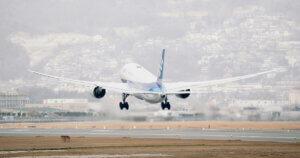
Discover how this ground effect is generated in aircraft and how to control it on a flight if you are a pilot Learn how to avoid the well known balloon
You will be up to date with the news at World Aviation Group.